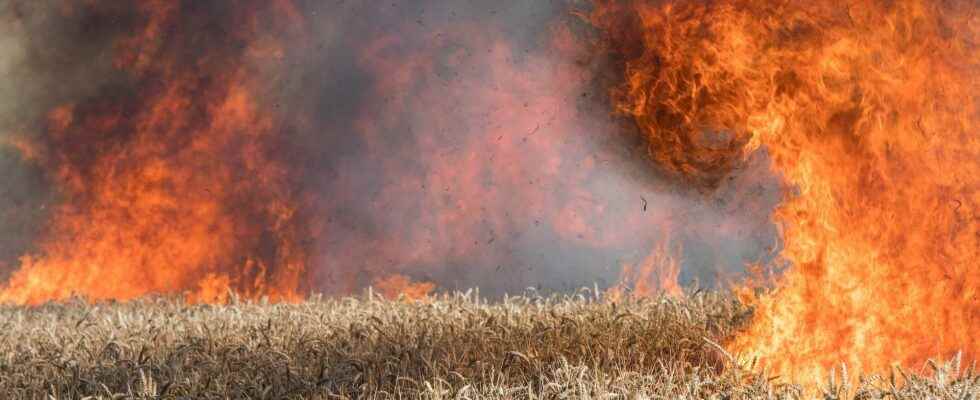You will also be interested
[EN VIDÉO] Climate change: how to protect our cities from heatstroke? To limit temperatures in urban areas during summer heat waves, this question must be considered right from the design of developments, residential or business buildings, roads, traffic plans, etc. A European study program, Urban Fluxes, lays the groundwork for better building the cities of tomorrow.
Since the beginning of mankind, thewinter has always been the season most at risk in matter of health, ofaccidents and mortality. The year 536 was marked by a brutal cold snap that led to a large number of illnesses: it is estimated that 100 million Europeans died during that winter. The freezing cold of some winters has also been exacerbated by volcanic eruptionsresponsible for cooling the climateand therefore agricultural disasters followed by famine and high mortality.
“Throughout history, winter has always been seen as the most difficult time of the year. In many civilizations, the arrival of spring is an event that was celebrated with festivals and the arrival offall was marked by ceremonies,” explain it Dr Kimberley R Miner, head of research on the subject at the Climate Change Institute and professor at the University of Maine in the United States. ” Winter has always been synonymous with suffering and struggles,” according to the scientist.
Heat is becoming the deadliest weather phenomenon
But things have been changing over the past few years. Although there are still brutal cold snaps, the winter season tends to shorten, and in Europe, frosts are less severe and less frequent. Spring starts earlier, as does summer, sometimes giving the impression of a summer period that can last six months! Moreover, the recent heat waves from 2022 in Europein the United States and Asiawith temperatures above 40°C (and even 50°C for Southeast Asia, such as Pakistan), even before the official start of summer on the calendar, testify to a change.
It is estimated that there are 5 million heat-related deaths a year worldwide
It is estimated that there are 5 million deaths per year worldwide related to heat. Over the past 20 years, cold-related deaths have increased, but the trend is reversing, especially in Europe, according to Monash University. In the United States, the heat is already the phenomenon weather report the deadliest. After the 2003 heat wave in Europe which caused the death of 70,000 people, the heat wave which hit Russia in 2010 caused 56,000 deaths (heat, pollution and forest fires).
In 2020 and 2021, the summer season was marked by devastating events, such as the historic fires in North America (in Canada in particular) and southern Europe (Greece, Turkey, Spain). In addition to the deaths, injuries and economic disaster (70 billion damage in 2021 in the USA), these fires had significant consequences on the mental health of the victims who lost everything, and on the quality of theair : them clouds of smoke from the American and Canadian West crossed the entire continent and even the Atlantic Ocean, as far as Europe.
Some 339,000 early deaths per year would be linked to pollution from the fires. Added to this are the numerous pollution peaks at theozone and to fine particles which rage every summer in Europe during anticyclonic conditions: anticyclonic blockages which are a priori more recurrent and more durable with the global warming. The early arrival of spring and the rise in temperatures also lengthens pollen season : Yale University specifies that in North America, the pollen season has gained 13 to 27 days, leading to an increase in problems related toasthma.
A lack of drinking water in anticipation and more frequent floods
The drought also involved all continents exceptAntarctic, over the past summer. Its consequences on theagriculture, and therefore on food and jobs, are disastrous. In addition to impacting food production, access to water is becoming more difficult in countries that thought they were spared these problems until now: Italy, the United States (California) and even Israel. . LInstitute of Climate Change estimates that to cope with drought, the development of water-related infrastructure will cost 114 billion dollars each year in the world.
The violent rise in temperatures also has consequences for the wildlife wildlife (and therefore on the human food that derives from it): it is estimated that the heat dome that affected western Canada during the summer of 2021 caused the death of one billion marine animals. The combination of heat, drought, forest fires and pollution already has dramatic consequences on biodiversity and human health, but to these consequences are added the floods lightning: global warming leads to a greater risk of precipitation diluvial, with floods all the more likely as these rains fall on soils desiccated by drought and heat, or made impermeable by the concreting linked to urbanization. Recall that the July 2021 historic floods which affected Germany and Belgium killed more than 200 people.
As the Climate Change Institute points out, after the dangers associated with volcanic eruptions and the ice Age of the past, Humanity must now deal with events due to climate change linked to human activity, and the only way to make the summer period less catastrophic is to deal with climate change at its source. »
Interested in what you just read?
